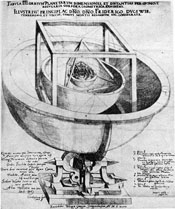Quantum Field Theory Group

Quantum field theory was initially introduced by physicists to describe the interaction of elementary particles, which form the fundamental building blocks of matter and light.
This theory has been tested by colliding particles at very high energies far exceeding the energy scales typical e.g. for chemical reactions or biological processes and life. The predictions of quantum field theory have been verified in these experiments with a fantastic accuracy, see e.g. (http://public.web.cern.ch/Public/Welcome.html).
Even though the typical effects predicted by quantum field theory are most prominent in the high energy (small distance) regime associated with elementary particles, the theory also forms the basis of our understanding of nuclear and chemical reactions, laser physics, and quantum optics. Quantum field theory is also a vital ingredient in our understanding of the processes in the Early Universe which have shaped the large scale structure of today’s Cosmos such as the clustering of galaxies, or the cosmic microwave background (http://map.gsfc.nasa.gov/).
Despite the fact that quantum field theory was initially intended to describe “particles”, it turned out that the fundamental building blocks of this theory are in fact (quantized) fields, which only exhibit particle-like features under certain circumstances, but not in others. Not surprisingly, some aspects of quantum field theory appear counterintuitive. One such feature is that, in quantum field theory, there necessarily must exist long-range correlations in any state, and even the vacuum. The proper interpretation of the consequences of such features also raises some interesting philosophical questions.
The mathematical structures underlying quantum field theory are only partially understood, but from what we know they relate - in a profound and highly nontrivial way - ideas and concepts from very different areas in mathematics, such as functional analysis, (non- commutative) geometry, group/representation theory, operator algebras, stochastic processes, combinatorics and measure theory. There are correspondingly many different approaches and angles on quantum field theory, and the further investigation of the foundations and constructive aspects of quantum field theory is the aim of our newly formed research group at Cardiff, consisting of S. Hollands, C. Jäkel, G. Leiler and H. Olbermann.
You can find out more about our research interests and recent papers by clicking on the names. Our current interests include:
- Non-equilibrium states in quantum field theories
- Quantum field theories on curved space-times
- Operator product expansions and algebraic properties of quantum field theories
- Transport equations for quantum field theories
- Non-perturbative construction of Quantum Electro Dynamics in 2 dimensions
- Particle content of thermal field theories
International Collaborations:
The members of our group work together with groups from
1) University of Chicago (USA) (http://physics.uchicago.edu/t_rel.html)
2) Göttingen University (FRG) (http://www.lqp.uni-goettingen.de/)
3) Harvard (USA), (http://www.arthurjaffe.com/)
4) Hamburg University (FRG) (http://unith.desy.de/research/aqft)
5) UC Santa Barbara (USA) (http://www.physics.ucsb.edu/~relativity/)
6) ETH Zurich (CH) (http://www.itp.phys.ethz.ch/mathphys/)
